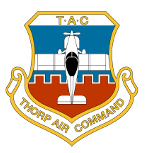 |
Thorp Air Command - T18.netSupporting Owners, Builders and Pilots of the Thorp T-18 and its variants. |
 |
| It is currently Sat Apr 27, 2024 11:29 am |
 |
Thorp Air Command - T18.netSupporting Owners, Builders and Pilots of the Thorp T-18 and its variants. |
 |
| It is currently Sat Apr 27, 2024 11:29 am |
|
All times are UTC - 6 hours [ DST ] |
 
|
Page 1 of 1 |
[ 13 posts ] |
|
| Author | Message | ||||
|---|---|---|---|---|---|
| mattst18 |
|
||||
Joined: Wed Oct 21, 2009 8:39 pm Posts: 194 Images: 43 Location: USA |
|
||||
| Top | |
||||
| smokyray |
|
||||
Joined: Wed Jul 04, 2012 9:45 am Posts: 42 Location: Bar VK TX32 |
|
||||
| Top | |
||||
| mattst18 |
|
||||
Joined: Wed Oct 21, 2009 8:39 pm Posts: 194 Images: 43 Location: USA |
|
||||
| Top | |
||||
| Victor J Thompson |
|
|||||
Joined: Wed Jul 18, 2012 12:16 pm Posts: 71 Images: 70 Location: Merrickville, Ontario, Canada |
|
|||||
| Top | |
|||||
| mattst18 |
|
||||
Joined: Wed Oct 21, 2009 8:39 pm Posts: 194 Images: 43 Location: USA |
|
||||
| Top | |
||||
| fytrplt |
|
|||||
Joined: Tue Oct 20, 2009 8:07 pm Posts: 1140 Images: 2 Location: Lakeland, Florida, USA |
|
|||||
| Top | |
|||||
| chuck |
|
|||||
Joined: Wed Oct 21, 2009 10:53 am Posts: 169 Images: 19 Location: USA |
|
|||||
| Top | |
|||||
| mattst18 |
|
||||
Joined: Wed Oct 21, 2009 8:39 pm Posts: 194 Images: 43 Location: USA |
|
||||
| Top | |
||||
| SHIPCHIEF |
|
||||
Joined: Tue Nov 29, 2011 9:05 pm Posts: 471 Location: USA |
|
||||
| Top | |
||||
| mattst18 |
|
||||
Joined: Wed Oct 21, 2009 8:39 pm Posts: 194 Images: 43 Location: USA |
|
||||
| Top | |
||||
| bfinney |
|
|||||
Joined: Thu Oct 22, 2009 2:24 pm Posts: 501 Images: 6 Location: Yelm, WA USA |
|
|||||
| Top | |
|||||
| dan |
|
||||
Joined: Wed Oct 21, 2009 9:30 am Posts: 898 Images: 0 Location: USA |
|
||||
| Top | |
||||
| SHIPCHIEF |
|
||||
Joined: Tue Nov 29, 2011 9:05 pm Posts: 471 Location: USA |
|
||||
| Top | |
||||
 
|
Page 1 of 1 |
[ 13 posts ] |
|
All times are UTC - 6 hours [ DST ] |
Who is online |
Users browsing this forum: No registered users and 16 guests |
| You cannot post new topics in this forum You cannot reply to topics in this forum You cannot edit your posts in this forum You cannot delete your posts in this forum You cannot post attachments in this forum |